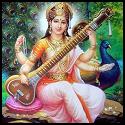|
 Previous Indian Cuisine Thread Indian cuisine (that is, just one cuisine) does not exist. India is a huge country with many different cultures: almost 800 different languages are spoken by Indians! Billions of people live there! It's got deserts, jungles, mountains, beaches, and more! The cuisine is equally varied. Check out Wikipedia's list of Indian cuisines:  And that's not counting the cuisines of neighboring countries that overlap to some degree with Indian food, like Sri Lanka, Nepal, China, and Pakistan. So there is pretty much nothing general that you can say about Indian food that applies to every cuisine, or even to most cuisines. Maybe the only common thread is that Indian food is often big on spices of various kinds (which is not to say it's spicy), including whole spices, ground spices, spice mixes, and often some combination of all three. So, mostly this thread is just a catchall for all Indian food. Talk about Punjab pickles, Bengali brinjals, Chettinad chutneys, or even British butter chicken, and everything else. This OP will just cover some highlights of some Indian cuisines, and also some basics that are helpful for someone looking for some entry points. THE BASICS OF INDIAN COOKING  Most Indian food can be eaten without any utensils. You can use forks and spoons if you want. It's nice to serve a variety of foods for an Indian meal. If you want to be fancy you can serve your food with a thali: a big round platter with little bowls for each food, or, more traditionally, a banana leaf or other sort of big old leaf. You can cook most Indian food without any special equipment. A pressure cooker is nice. A cast iron pan is good - it'll work as a tawa (the same as a Mexican comal), which is a flat pan used for flatbreads. A wok is nice - it'll work as a kadai, which is basically a wok. A spice grinder is nice - an unused blade coffee grinder works fine, like this one. Something to deep fry in (cast iron pan, perhaps) is nice. If you have any wooden cookware, or plastic stuff, get ready for it end up stained yellow with turmeric sooner or later... Indian food often involves fresh ginger root and/or green chilies, so these are good to have on hand. Some varieties typically use garlic and onions, or shallots. Those are good to keep around too. Tomatoes can be a good ingredient if you cook lots of Indian food. Lemon juice is helpful: I like to freeze lemon juice in my ice cube tray then store the cubes in a plastic bag in the freezer. Beyond that, most pantry staples are dried goods that will last a while, like spices, pulses, and flours (see below for more information). A NOTE ON CURRY  Sometimes people confuse Indian food with everything that is called "curry," which is nonsensical, since "curry" applies equally to things like Thai curries and Japanese curries, and even most Indian "curries" are from Indian-influenced foreign cuisines, like British Indian food, West Indian Indian food, and South African Indian food. "Curry paste" and "curry powder" go into those sorts of foods but not into much Indian food in India. I think the basic idea is that the British, who were unfamiliar with the concept of flavor in food, used the word "curry" to describe anything that didn't taste like poo poo, and from that point forward white people started to use the word to refer to anything soupy cooked by brown people. I would encourage you to just drop the word "curry" from your vocabulary except to describe dishes that already have that in their name. A NOTE ON SPICY The British also went way overboard when they discovered that there are things spicier than black pepper. This led to them making all their Indian-inspired food very spicy. White people then decided Indian food is spicy. It isn't! I mean, some of it is. But most of it isn't. Most of it has spices, but they're not spicy spices. (The ketchup in India is a little spicy, but not overly. Try a ketchup sandwich.) If you think all Indian food is spicy, please eat more Indian food. If you want to make Indian food spicy, you're welcome to add chili powder or fresh green chilies (like Thai chilies) to your food when you cook or serve it. With those rather unhelpful stereotypes out of the way, let's move to the good stuff. I'm going to cover some topics that I find interesting. If you have thoughts about other topics that you would like added to the OP, let me know. RICE  Maybe the most famous Indian food in this here subforum is dino's lemon rice. It's a simple, fast, delicious recipe with lots of variations. dino doesn't even mention plenty of other stuff you can throw in: I like to add a few dried red chilis to the oil that you pop the spices in (like in this recipe), or a chopped up green chili or two (like serranos), or both. In India I mostly see people adding what are basically green Thai chilies. You can also add split chana dal, hing, and even onions or shallots. It's a very versatile recipe and also a very good introduction to Indian cooking. It uses lots of important spices and other ingredients, but it's not strict, so it teaches you to go with what you've got. It also teaches you how to fry spices in oil, known as "tadka" or "chaunk," which is an important cooking technique in a lot of Indian cuisine. In addition to the wonderful lemon rice, there are some other fun rice dishes, including elaborate biryanis (mushroom, chicken, vegetable, mutton, paneer, etc); slightly less elaborate pulaos (aka pilafs) (vegetable, vegetable again, etc.); and plain rice. Basmati is a wonderful rice to use for Indian food, but plain jasmine is great too. You can use brown if you want, although of course you'll want to adjust the cooking times as necessary. Rice also shows up in some places you might not expect, like the batter or dough for some... FLATBREADS  Many meals in Indian cuisine, if they aren't served with rice, are served with a flatbread of some kind. My favorite is the simple roti/chapati which is a whole wheat flatbread, typically with no ingredients other than flour (called atta), water, and maybe salt (and perhaps some ghee spread on them when they are finished). But India has dozens of varieties of flatbread, made from buckwheat, chickpea flour, sorghum flour, cornmeal, and so on; they can be fried until they puff up, fermented, yeasted; stuffed with potatoes or cauliflower or radish or fenugreek leaves... and of course there's also naan which you actually already knew if you've been clicking on the links or if you've eaten at an Indian restaurant in the US or Britain, which often only serve naan for some reason. Perhaps the most famous Indian flatbread outside of naan is the dosa, which is more of a crepe. Dosas are made from batters, typically containing rice and lentils (dals) but sometimes made of other stuff like oats or cream of wheat, and often fermented, but sometimes not. Classic big flat crispy style dosas can be a little tough to make without a good grinder: in India people usually buy the batter or use a wet grinder or some other powerful grinder. A nice blender will do in a pinch, though. Dosas are often served with a delicious potato stuffing or with sambhar but you can make a dosa a meal in itself. In addition to dosas there are also other crepes. So many crepes. SPICES One of the best but perhaps most intimidating aspects of Indian cuisine is the laundry list of spices that confront you when you look at a recipe. Also, if you're not reading an Anglicized recipe, sometimes they won't bother using the English names for the spices, and you'll have to remember that jeera is cumin or amchoor is mango powder. But trust me when I say that after a bit of cooking with Indian food, it becomes much less intimdating. A recipe calls for five spices? Fine, just grab the jars and get them out. You'll quickly realize that there are a few very common spices for various cuisines (like cumin, mustard seed, and urad dal for South Indian food, or cumin, coriander, and cardamom for North Indian) and once you have those on hand you'll have no trouble whipping up basically any recipe. In order not to go bankrupt, you ought to buy these spices either from ethnic grocery stores (typically your best option), from a bulk bin at a grocery store that sells spices in bulk, or from the ethnic aisle in a white people grocery store (look for small plastic bags). Also, if you can, you should try to buy whole spices and grind them yourself using a coffee grinder dedicated to spices or something similar. The taste difference is notable, whole spices last longer, and you need whole spices for lots of recipes anyways, so you might as well buy them all whole. The best "starter" spices depend on what kind of food you're cooking. But, I think you can't go wrong with cumin seeds (jeera), coriander seeds, black mustard seeds, green cardamom pods, dried red chili peppers (lal mirch) (japones or arbol are the ones usually sold in America, I think, and they work fine), turmeric (haldi), cloves, and hing, also known as asafoetida (lit. "the devil's rear end in a top hat"), and some stuff you probably already have, like cinnamon, bay leaves (tej petta), and black peppercorns (kali mirch). Some other good ones are fenugreek seeds (methi), fennel seeds (saunf), and some split dals, like urad dal or chana dal (Bengal gram).  If you want to store your spices like an Indian you can buy a "masala dabba," pictured above. If you want to be like me you can get some nice cheap glass jars at Cost Plus World Market. Spices in Indian food are often either fried in oil (the tadka/chaunk technique mentioned above) in order to draw out fat-soluble flavors, or ground and added to food, either on their own or in the form of spices mixes, like garam masala, which is made of warming spices like cinnamon and cloves - garam masala means warming mix. I recommend making your own spice mixes, since they are fresher that way, and eventually you can tweak your recipes to match your tastes. DALS/LENTILS/PULSES/BEANS  Indian food makes good use of more lentils and beans than many people know exist. Some split lentils are used as spices to add flavor, like urad dal (split skinned black lentils, which are white inside) or chana dal/chickpeas/Bengal gram. Dals are also ground up to make flours (like chickpea flour/besan/gram flour) or ground directly to make batters for flatbrads. "Dal" refers either to the lentil or to the soup made from the lentil. Most lentils come in their whole form and in their skinned, split form. The green lentils you are maybe most familiar with are whole lentils. Red lentils (masoor dal) are skinned, split green lentils. Some good dals to start with are the famous dal makhani made with black dal/whole urad dal and kidney beans (rajma); masoor dal which is a split red lentil soup; rajma or kidney bean soup; chana masala (chickpeas) Punjabi style or not; and moong dal aka split mung beans (which are yellow, as opposed to whole mung beans, which are green). And try the lobia masala (black eyed peas)! Those are some basic recipes to use some of the basic dals. Other interesting dals are toor dal (pigeon peas) which makes a great soup, dal bukhara which is made with the black lentil like dal makhani, and this delicious kala chana dal, made with black chickpeas. For cost, taste, and waste reasons, I recommend buying dry rather than canned lentils, and anyways most of these are only sold dry anyways. Indian grocery stores will have them. Middle Eastern grocery stores will have many of these, and you can find some of them all over - mung beans show up in the weirdest places and everyone sells chickpeas. If you have a pressure cooker (see below) lentils are quick and effortless to make. FRIED SNACKS  I don't know what's up in India but they have seriously figured out their snack food game and it's amazing. Samosas are my favorite but that is just the tip of the iceberg. Check out pani puri, dal kachoris and matar kachoris, fried okra, onion pakoras (there are many other kinds of pakora too), aloo tikki, and mysore bonda. Hell they even eat these things for breakfast. I don't think you can get a better, more indulgent late Sunday brunch recipe than fried savory lentil donuts! PICKLES  Indian pickles are not for the faint of heart. They are generally heavily spiced, quite salty, sometimes spicy, and made out of quite strongly flavored foods, like lemons or unripe mangoes. But, if you're an adventurous eater or aspiring fermenter, you really need to check them out, because they're mindblowing when it comes to flavor. Start with tomatoes or check out lemons (or this or this) or mango if you dare. Indian lemons are small so you'll have to adjust the recipes a bit. Pickles are eaten along with other foods to add some flavor to the bite. Or, if you're crazy like me, you can just straight up eat them alone. BREAKFAST  India has some fun breakfast foods to check out. I think South India is often taken to be the king of breakfast foods - the dosas and medu vadas mentioned above are the height of luxury, as are the wonderful idlis, all of which are generally served with sambhar and chutney. But simpler fare like poha, oats upma, besan chila, egg bhurji, and vermicelli upma (one of the few noodle dishes in India) are good if you want something easier to prepare. I sort of suspect the South Indian breakfasts are predicated on having someone slaving over the meal for half an hour before you wake up... REPRESENTATIVE RECIPES  I've covered a lot of the hits above in the various sections. But there are some classic Indian recipes that should really be in the OP, and it would be nice to get a feel for some various cuisines. So, here are some of my favorite recipes for some cuisines. PLEASE do suggest your own so we can fill out this list! Maybe some day in the future we can have a recipe or two for many of the main cuisines! South Indian - Actually many different cuisines, and also related somewhat to Sri Lankan cuisine (because Sri Lanka is an Island south of India). Features black mustard seeds, coconut, small amounts of oil, lots of tadka, curry leaves, and tamarind. Curry leaves (kari petta) are leaves from the curry plant, which is more or less the only time it makes sense to talk about "curry" in Indian food. Tamarind is a tart fruit which is used to make things like the perfect chutney to serve with samosas. It is also used in some other cuisines, like Thai. Try the rasam and the kosambari. North Indian - Also many different cuisines. Lots of soupy gravy-based recipes and spice mixes. Try saag paneer (cheese and spinach), keema (minced lamb), macher jhol (fish soup, although you may have trouble getting your hands on mustard oil which is traditionally used), or rogan josh (lamb). Also check out baingan bharta, a nice eggplant dish, or soya chaap, one of my new favorites! I think malai kofta is also a north-ish recipe? Goan - Lots of fish, and lots of Portuguese influences. I don't have any favorites - any suggestions? Try a vindaloo or solkadhi. Indian Chinese Food - "Chinese" food in India is not Chinese food. It's like American "Chinese" food. Try gobi 65 or chicken 65, veg Manchurian or chicken Manchurian, or Hakka noodles. British Indian - Not my favorite, but it's what lots of people outside India are familiar with. Butter chicken, chicken tikka masala, etc. Potatoes - Not actually a cuisine, but potatoes (aloo) are the king of foods, so they get their own section. Try aloo gobi (potatoes with cauliflower), aloo jeera (potatoes with cumin), aloo matar (potatoes with peas in gravy), aloo bhaji (I don't know enough Hindi to translate 'bhaji'), aloo posto (Bengali potatoes with mustard seed), Punjabi dum aloo (potatoes in gravy), and the ultimate street food, pao bhaji. PRESSURE COOKING A pressure cooker is great for Indian food. You can cook lentils and beans very quickly and easily (and cheaply, too, since it takes less heat/energy). An easy way to make many Indian foods is to fry up your aromatics, add the lentils/beans, and cook until done in a pressure cooker, or cook the lentils in the pressure cooker, fry up your aromatics separately (tadka/chaunk), and add them at the end. Many Indian recipe sites will tell you to cook things for some number of "whistles" from the pressure cooker. Unfortunately every kind of pressure cooker whistles at a different rate and none of the recipe writers seem to realize this, so you'll have to use a cooking chart to estimate cooking times. CHAI/TEA  Chai is black tea brewed with milk and spices. It's neat. Try it sometime. People in India also like to drink coffee. Or, if you live near Delhi like I do, everyone drinks lovely Nescafe and somehow that's supposed to count as coffee. RESOURCES Here are some cookbooks, websites, and YouTube channels to check out. Cookbooks - I honestly haven't found any straight up classic general Indian cookbooks in English I like a lot. Probably there is too much to fit in one book. Some good gimmicky cookbooks are My Two Souths by Asha Gomez (South Indian/USA Southern fusion), The Indian Cookery Course by Monisha Bharadwaj (techniques and 300 recipes, generally pretty good), and Prashad Cookbook by Kaushy Patel (a cookbook from a famous-ish restaurant). A decent more straightforward book is The Essential Marathi Cookbook by Kaumudi Marathé for Marathi cuisine. Websites - dino's recipes on the wiki, Veg Recipes of India, Manjula's Kitchen, Vahchef, Hebbar's Kitchen, Veg Recipes of Karnataka, Swasthi's Recipes, Sanjeev Kapoor, Archana's Kitchen, Konkani Food Recipes. YouTube - Some of these are in Hindi but you can get the picture. Gita's Kitchen, Nisha Madhulika, Bong Eats, Rajshri Food, Bharatz Kitchen, Taste of India, Kalvenky. Madhura's Recipes is in Marathi. Some of the websites above (like Manjula's Kitchen) also have YouTube channels. SWEETS  India has a shitton of desserts. I don't like any of them much except besan burfi. Someone else can make a dessert post and I'll link it or add it to the OP. Shahi tukra is worth checking out I guess. Here is a dino post with some information about why most Indian desserts just taste like sugar, IMO. TychoCelchuuu fucked around with this message at 13:27 on Dec 2, 2022 |
|
|
|

|
| # ? Apr 26, 2024 04:48 |
|
I moved to India a little while ago which means I've literally eaten Indian food every day for a long time. This is not a huge change from when I lived in America but whatever. It also means I sometimes discover new foods I've never heard of. Two recent foods I've learned about lately and which I like quite a bit: aloo phulkopir dalna and papad mangodi ki zabzi. The latter requires first making mangodi.
|
|
|
|
In the old thread I was about to recommend this coffee grinder as a spice grinder because it's cheap and the bowl comes out for cleaning
|
|
|
|
Aww, you used my title. I'm honored! Great overview, and I am not promising anything, but I might muster the gumption to make a dessert post later. Probably not, though.
|
|
|
|
quote:Goan - Lots of fish, and lots of Portuguese influences. I don't have any favorites - any suggestions? A traditional vindaloo (not the British variation) is a good Goan dish. The British version is super spicy, to the point that it overwhelms any subtleties in flavor. The real marker of a good vindaloo is how the vinegar or wine comes through in concert with garlic and chili.
|
|
|
|
Afriscipio posted:A traditional vindaloo (not the British variation) is a good Goan dish. The British version is super spicy, to the point that it overwhelms any subtleties in flavor. The real marker of a good vindaloo is how the vinegar or wine comes through in concert with garlic and chili. To add to this, Goan cuisine tends to incorporate fish pretty heavily. I'm a huge fan of bhaji, which is mainly just a type of spiced soup, usually made with coconuts. It's not the same as the lentil fritters also called bhaji; different language, different dish. The two go together really well, though. Goan pav is basically Portuguese pao, and it's a pretty uncommon thing to see risen breads like that in Indian food. uhh what else. mainly it's fish, vinegar, coconuts? oh and kokum, that's a thing speaking of kokum, make sol kadhi immediately, you will not regret it
|
|
|
|
really excellent OP, OP.
|
|
|
|
Great thread, Tycho. Also, aww you guys mentioned me. <3 Please add Bong Eats to the YouTube channel suggestions. Impeccably filmed videos, exact measurements of everything, and clear and easy to follow instructions. No gimmicks, just good food. And, they give you the Bengali and English word (as well as the Hindi for it quite often). A note in Indian sweets. Surprisingly, there aren't that much of a variety of spices used in our sweets! This would seem surprising for anyone who's eaten a Chirstmas cake, where you're including all kinds of spices from exotic lands, or even our masalas that we use for things as basic as tea. Why is that? You would think that when you're making something that's a treat for everyone at the end of the meal, you're going to want to go all out, right? To really go over the top with the spices! Two things to note. Of the cuisines that have really good sweet making traditions (Gujarait and Bengali being prime examples, although Punjabis are no slouches either), the main meal itself is going to be highly spiced. Not necessarily hot spicy food, but rather having a complex array of spices. In one meal, you could easily be going through 20 - 30 individual spices, all done in various combinations. By the time you get to the sweet, you kind of want to take it easy. But there's another reason. Sugar has always been a pretty expensive ingredient, especially white sugar. Same goes for honey, or any other intensely sweet ingredients. Why do you think the most expensive curries throw in a spot of sugar? You're showing off that you can afford it. As a general rule, if the dish gets ghee to finish it, it's probably going to get a bit of sugar to round things out (ghee also being a fairly expensive ingredient to produce, as you're reducing cream into butter, and reducing butter into ghee). The brown block sugar, coconut sugar, etc are widely available, but think of the nicer Indian desserts. Burfi, peda, rasa gulla, gulab jamun. They're fairly pale in colour, and frequently garnished with gold or silver leaf. Basically, when you're springing for all this money on white sugar, you're also going to be using only the most expensive spices to showcase how special that sugar is. Saffron, the most expensive spice in the world is a frequent visitor. Cardamom, the second most expensive spice also shows up. But aside from that, you're mainly talking sugar, ghee, cardamom, saffron, nuts of various types (pistachio, almond, cashew), and something to act as a base. Hell, in some cases the base /is/ the nuts itself (kaju katli being a prime example). What you should taste when you bite into a bit of Indian sweet is the spice, quite clearly, and sweetness. The saffron is expensive, as is cardamom. You're using them almost exclusively as the flavouring agent. This dessert cost you a fortune. If you muddy that up with other things, you're not going to taste the delicate flavours. There's this one dish, Kheer, where it's some rice, boiled in milk, with cardamom, sugar, and saffron. You finish it with ghee. Not a lot of complicated flavours, and you don't even cook the milk a long time to make it thick like a rice pudding. It's meant to be a fair bit loose. Almost soupy in consistency. Sometimes, people garnish it with slivered almonds, and golden raisins fried in ghee until they puff out. To prove to myself that the fat content wasn't even that important, I made a vegan version of it with almond milk (unsweetened, unflavoured), noodles (very thin roasted vermicelli noodles is a common variant, and I had some from the Indian store), cardamom, saffron, sugar, and fried slivered almonds and golden raisins (in a little coconut oil). One bite, and I was back in my childhood. It hit all the spots. The point is that if you get a skilled sweets maker, the sugar should be there but it shouldn't overwhelm. Frequently, you'll get the mass produced crap, where they just heave sugar at it until it yields, so that they don't have to spend money on the spices. There are some, like mysore paag, where it's just besan, sugar, and ghee, and nothing else, but that's the exception.
|
|
|
|
Afriscipio posted:A traditional vindaloo (not the British variation) is a good Goan dish. The British version is super spicy, to the point that it overwhelms any subtleties in flavor. The real marker of a good vindaloo is how the vinegar or wine comes through in concert with garlic and chili. The British version isn't really even a version, it's just a heat level indicator one step below phal for the generic restaurant curry sauce. It might also mean they add potatoes, at best. Vinho is definitely not involved.
|
|
|
|
Any good sources for Malaysian Indian? I dunno if it's even a variant or just South? Indian food that happens to be in Malaysia but everything I had there was amazing.
|
|
|
|
Grand Fromage posted:Any good sources for Malaysian Indian? I dunno if it's even a variant or just South? Indian food that happens to be in Malaysia but everything I had there was amazing. Looks like it's heavily leaning towards Tamil Nadu and Kerala with regards to the population there, so it'd be a good place to start your search. A lot of the old aunties have youtube channels where they tell you how to make X or Z, but they're in Tamil or Malayali, but generally the ingredients they'll show in English as well, and the technique is pretty universal. There's English channels for Tamil recipes, but I haven't really bothered looking for them, because I speak Tamil. EDIT: I stand corrected. There's these two friends who live in Texas (as far as I can gather) who do proper Tamilian food, but speak the recipes in English. https://www.youtube.com/watch?v=user?kalvenky I think they'd originally started the channel for their kids who had gone off to college, and wanted to know how to make mom's recipes while they're away, and it grew from there. I've followed a fair few of the recipes when I wasn't able to reach my sister-in-law, mom, or other sister-in-law, because it's like an ungodly hour, and I don't want to wake someone to figure out if ______ gets asafoetida, because it has onion anyways. Because the thing about a lot of the Tamil Brahmin cooking videos on YouTube is that they're working with TamBram neighbourhoods, where the produce stand is on the way home, so you can afford to make a thing with 12 green beans to feed 2 people, because that's all you're buying that day for that meal.
|
|
|
|
My favorite street food during my time in Kolkata was the kati roll, sometimes described as Chinese egg rolls (so maybe an Indian fusion street food? It was always Indians selling them) but the filling was generally a mix of curried potatoes though you’d see chicken and lamb options. They’d use a fresh dough and roll out a flat breadbasket. In a hot pan they’d crack an egg and scramble it then throw the flat bread on top. Cool a little then flip, the egg would cook into the flat bread. After some flipping so both sides are good they’d finish it with fresh onion, lime, potato curry, hot sauce. They were sublime. I’m pretty sure I got food poisoning the first time I had one but that didn’t stop me from finding another street vendor that made them. The day before I flew home I went out and got a few. I’d love to have another some day, I need to just try my hand at home.
|
|
|
|
Yiggy posted:My favorite street food during my time in Kolkata was the kati roll, sometimes described as Chinese egg rolls (so maybe an Indian fusion street food? It was always Indians selling them) but the filling was generally a mix of curried potatoes though you’d see chicken and lamb options. They’d use a fresh dough and roll out a flat breadbasket. In a hot pan they’d crack an egg and scramble it then throw the flat bread on top. Cool a little then flip, the egg would cook into the flat bread. After some flipping so both sides are good they’d finish it with fresh onion, lime, potato curry, hot sauce. Wait, there haven't been like three shops springing up in the cooler neighbourhoods who charge $9 for those things? Because I think I passed two or three between the West Village and Chelsea alone. They're showing up all over the place; food trucks, tiny little takeaway shops, as features on regular menus. IT's becoming A Thing in NYC as of the last 7 or 8 years
|
|
|
|
Ringing in the new thread with a dish from 50 Great Curries of India that I've been meaning to make for ages- lamb shank korma! I happened to thumb to the lemon rice recipe in the back of the book and realized I had all the ingredients on hand so that happened too. The chana masala and raita recipes are both from Hari Ghotra's Easy Indian Slow Cooker Cookbook. Lesson learned with this one- don't burn your onions even a little bit; I picked out the worst of them but you can still kind of taste it. I think I'll debone the shanks next time and make a stock for the gravy instead of water just to make it easier to eat. PERMACAV 50 fucked around with this message at 03:06 on Oct 6, 2019 |
|
|
|
I had bitter gourd (karela) for lunch yesterday! Looked pretty much like yours.
|
|
|
|
Good OP, Tycho! I am certainly not a vegetarian, but Indain cuisine could change my mind. Aloo gobi is addictive.
|
|
|
|
dino. posted:Wait, there haven't been like three shops springing up in the cooler neighbourhoods who charge $9 for those things? Because I think I passed two or three between the West Village and Chelsea alone. They're showing up all over the place; food trucks, tiny little takeaway shops, as features on regular menus. IT's becoming A Thing in NYC as of the last 7 or 8 years That’s wild. 9 bucks for a Kati roll. I think the street vendors charged what amounted to like a buck tops. I don’t think it was even that much at the little food cart that I walked to. I should look around Portland.
|
|
|
|
Yiggy posted:That’s wild. 9 bucks for a Kati roll. I think the street vendors charged what amounted to like a buck tops. I don’t think it was even that much at the little food cart that I walked to. I should look around Portland. If you're in PDX, it's well possible that some white dude with a beard and ugly tattoos has made a food truck concept out of it, and is charging $16 a pop for it. And the roti is made of like heritage wheat or some poo poo. EDIT: The masala dabba you've got pictured in the OP defeats the purpose of a masala dabba. The point of the thing is that because you use spices so frequently, it'd be annoying to have to open jars of every single spice every time you cook. You store your most used spices in the little cups, and cover the whole entire thing with a lid. Then, when you're cooking, you fling in whatever spice you need, and then put the lid back on the works, and keep on keeping on.
|
|
|
|
dino. posted:EDIT: The masala dabba you've got pictured in the OP defeats the purpose of a masala dabba. The point of the thing is that because you use spices so frequently, it'd be annoying to have to open jars of every single spice every time you cook. You store your most used spices in the little cups, and cover the whole entire thing with a lid. Then, when you're cooking, you fling in whatever spice you need, and then put the lid back on the works, and keep on keeping on. It's hard to see but I don't think the mini jars have glass tops? Presumably the big lid is out of sight.
|
|
|
|
feedmegin posted:It's hard to see but I don't think the mini jars have glass tops? Presumably the big lid is out of sight. You know what? You're right. I think the weird collar thingy is throwing me off. That said, I really like that 4-way split thingy. That's cool as heck.
|
|
|
|
If a recipe asks you to toast spices, that's whole spices only right? I'm not getting any benefit out of tossing my cumin powder in hot oil, other than immediately burning it? What are your best recipe recommendations for weeknight meals? I'm talking "I just got home and want dinner on the table in 45 minutes, don't have a spice grinder or any whole spices on hand".
|
|
|
|
|
I thought when you toasted spices you did it dry, no oil?
|
|
|
|
Get an instant pot, I can make a bunch of stuff in there in that time. Kheema is my go-to.
|
|
|
|
silvergoose posted:Get an instant pot, I can make a bunch of stuff in there in that time. Kheema is my go-to. Got enough appliances already, unfortunately. Assume no access to a pressure cooker/instant pot
|
|
|
|
|
His Divine Shadow posted:I thought when you toasted spices you did it dry, no oil? Generally yes, but frying spices in oil gives a different flavor from dry toasting. Sometimes one, sometimes the other. But I wouldn't grind before toasting or frying.
|
|
|
|
silvergoose posted:Get an instant pot, I can make a bunch of stuff in there in that time. Kheema is my go-to. giv recypee I have yet to convince the bf that the instant pot is amazing. He thinks it's a scary beeping bomb. Meanwhile, he's happy to use his burnt up beat to poo poo stovetop hiss factory of terror pressure cooker. Suspect Bucket fucked around with this message at 01:24 on Oct 8, 2019 |
|
|
|
ChickenWing posted:What are your best recipe recommendations for weeknight meals? I'm talking "I just got home and want dinner on the table in 45 minutes, don't have a spice grinder or any whole spices on hand".
|
|
|
Suspect Bucket posted:giv recypee We miss our stupid stovetop one that started making a scary noise and then got an instant pot instead Kheema recipe I use is https://twosleevers.com/instant-pot-keto-indian-kheema/ though we have her book. And uh as always with food blogs of all kinds, ignore the title and giant blogwall of text.
|
|
|
|
|
I've never had keema but I've had this stuff a bunch and the first time I had it I was weirded out because it seemed so similar to meat. I dunno when soya became a thing in India (it seems like it's a thing in Europe too) but in America this stuff barely exists.
|
|
|
|
What a great OP and thread! My first foray into an Indian kitchen staple was Dino's daal tarka. My wife just doesn't like split red lentil texture as much as I do, so I'm going to try to get back into more regular Indian by making that Okra snack. On the kurkuri bhindi (okra) recipe, is there a way to make besan / gram flour from the raw pulses? I imagine that would do a number on my food processor or spice grinder but wanted to check before I go get another ingredient.
|
|
|
|
You could make it yourself but it’d be pointless. I don’t get why using whole spices would be time consuming. It takes like 30 seconds for the different seeds to pop. You could cook veg separately beforehand.
|
|
|
|
Hed posted:What a great OP and thread! Daal tarka works with any bean at all, including tinned beans. For lazy meals, I made like a curry paste for myself. It's all the things I like, and whole spices, and some oil, ground in a blender until smooth. I gave a jar to the boyfriend, and he was thoroughly impressed that he could knock up a daal in the five minutes it takes to open a tin of beans, dump in some curry paste, and nuke that summbitch for 3 minutes.
|
|
|
|
Thanks dino, I'll have to try some others. I used to have a ton of different ones (that I got when I first made your um... coffee mug lentil pancake recipe that was awesome and I can't find the name of right now) but they got used or tossed before our cross-country move. I'll have to try different ones, but I definitely like the red lentil because when I cook them they remind me of creamy mashed potato texture and I like that coolanimedad posted:You could make it yourself but it’d be pointless. Was this in response to me? My post was very wordy so apologies for the confusion... I was just asking if I could grind the lentil flour myself with home kitchen equipment. Not really asking about the spices.
|
|
|
|
Hed posted:Thanks dino, I'll have to try some others. I used to have a ton of different ones (that I got when I first made your um... coffee mug lentil pancake recipe that was awesome and I can't find the name of right now) but they got used or tossed before our cross-country move. I'll have to try different ones, but I definitely like the red lentil because when I cook them they remind me of creamy mashed potato texture and I like that Sorry I was replying to two different posts!
|
|
|
|
Yes, you can make besan yourself, but it will indeed do a number on your grinder. Technically besan is made from skinned split chickpeas, whereas chickpea flour is made from whole chickpeas, but the difference is negligible. You might need to adjust liquid a tiny bit in a recipe if you swap one for the other.
|
|
|
|
Adai? Dosa? Besan puda? Honestly gram flour isn’t so expensive as to try to kill your blender or coffee grinder to make at home.
|
|
|
|
Speaking of dosa, are you supposed to add water to the pre made fridge mix? These bad boys are coming out kinda thick. It's a rajma kinda day out today. Get those good bean boys in me. And I'm gonna eat them with dosa and no one can stop me. Suspect Bucket fucked around with this message at 15:28 on Oct 9, 2019 |
|
|
|
The batter is extra thick so you can make idli or dosa as you wish. For dosa you add water.
|
|
|
|
I'm trying to cook with Indian spices more, think I finally started to get it right in terms of...seasoning. I heat up a combo of some of the seeds in oil, get the garlic and onions going, then put in my powdered spices with the chickpeas, veggies, and whatnot. Basically I've been using a penzy's "curry" mix for half my spices, then picking out individual ones I bought to kinda learn what they taste like. In the end just big healthy one-pot Indian inspired dishes served on rice. I definitely got some good flavors tonight, especially with the fennel seeds. really love how fennel smells like licorice but almost gets like, savory when it cooks. still not sure if I'm doing any of this quite right but I'm a pretty fearless cook. I think I'm a little obsessed so any advice on preparing and getting the most out of the spices would be cool. I know a grinder would help.
|
|
|
|

|
| # ? Apr 26, 2024 04:48 |
|
Sounds like you're doing well! A grinder would indeed help for making the powdered spices tastier. And rather than using the "curry" mix you might as well just use single powdered spices, mixing them together if you'd like. You might also try doing the whole spices (and some powders) in oil separate from the rest of the dish, then adding the oil later. Like for instance in steps 10-12 of this recipe or steps 15-18 of this recipe, but you'll see this is common for tons of Indian recipes if you start looking at them. You can also start experimenting with other sorts of pulses beyond just chickpeas. Some are the sorts of things that you don't see often outside of Indian cuisine, like split red lentils (quite common but still a little unusual), whole urad dal, toor dal/pigeon peas, masoor dal (split mung beans), and others are just plain good, like black-eyed peas and kidney beans. Those are the second big component of flavoring for lots of dishes.
|
|
|





























